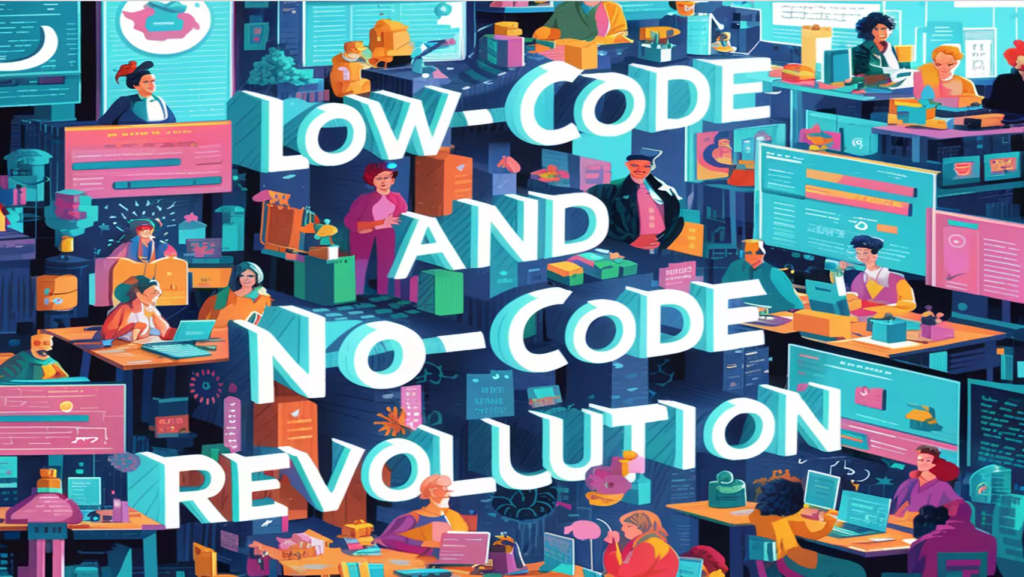The global EdTech market is experiencing unprecedented growth. It is expected to reach nearly $404 billion by the end of 2025, with an annual growth rate of over 16%. This
Low-code and no-code are approaches to software development that aim to simplify the process of creating applications, by reducing the need to manually code every aspect of the software.
The rise of low-code and no-code platforms has democratised software development, making it accessible to a wider audience.
At the same time, investors are showing a growing interest in companies offering SaaS software.
Among other things, they are always looking at one metric: MRR (Monthly Recurring Revenue).
These two points point to an acceleration in this business model
Low-code is a software development method that allows developers to create applications.
They use a user-friendly graphical interface rather than manually coding each line.
This approach relies on the use of visual tools and pre-built components to speed up the development process.
Developers with technical skills can still write code as required, but the main aim is to reduce the complexity and time needed to create applications.
No-code goes even further by eliminating the need to code.
This approach allows non-technical users, often business people or end-users, to create applications without writing code.
No-code tools use intuitive visual interfaces, templates and pre-built components to enable individuals with no programming skills to design and implement software solutions.
The main aim of no-code is to make the development process accessible to a wider audience.
These two innovative approaches aim to simplify and accelerate application development by reducing reliance on traditional programming.
There are several no-code platforms that allow users to create applications without writing code.
Bubble is a no-code platform that lets you create web applications without any programming skills. It offers an intuitive visual interface for designing applications.
A no-code platform like Adalo focuses on the development of mobile applications. It enables the creation of user interfaces and the definition of application logic.
Thunkable, with its agile drag-and-drop functionality, is attractive for creating interfaces and application logic.
OutSystems (No-Code/Low-Code) also offers no-code functionality. It allows less technical users to create applications quickly.
For website creation, Webflow is a no-code platform. It features a visual editor for designing responsive websites.
Airtable is a no-code platform that combines database functionality with a user-friendly visual interface. It uses tables and blocks.
Many others are still available.
These no-code platforms eliminate the need for in-depth programming skills. Depending on your specific needs, the complexity of your project and the functionalities, you will choose the most suitable solution.

Flutter is an open-source framework developed by Google, primarily used for creating cross-platform user interfaces (UIs).
It enables developers to create mobile, web and desktop applications from a single codebase. Flutter uses the Dart programming language.
A solution like FlutterFlow is based on Flutter. It suggests that it could be focused on developing applications using Flutter, but it is important to note that Flutter itself is already designed to facilitate the development of rich, fluid interfaces.
As you can see, no-code tools are becoming increasingly popular on the market. This is the case with solutions such as FlutterFlow.
This solution not only offers a marketplace, but also artificial intelligence. We also have all the custom code and the cloud function.
All these elements have completely changed and disrupted, if not killed off, traditional programming.
The notion of template has also been reviewed. Before, we used to buy a template, which was source code. Here, the template can be integrated into the platform.
In the same way, for the Cloud function, we had to install a certain number of packages. Now, with FlutterFlow, we have direct access to the interface that lets us manage function keys.
It’s an all-in-one platform that’s getting better and better at delivering on the promise of doing both no-code and without ever having to leave your work environment.
Overall, this kind of solution replaces traditional programming.
We gain in productivity and we increase development potential tenfold in an intuitive way.
Software solutions can use low-code or no-code platforms to accelerate their development.
These reduce costs and make it easier to create applications.
Low-code platforms enable developers to create applications more quickly.
Customisation is always possible. Simply add code if necessary. This allows developers to adjust the application to the specific needs of the business.
Accessibility to application creation by non-technical people on the business side with “Drag and Drop”. No need for in-depth programming expertise. This allows teams to quickly visualise and test concepts before developing complete solutions.
These low-code and no-code platforms can help to reduce development costs ideally in an iteration of ideas. Developing a POC or MVP
However, there are still limits in terms of complexity and customisation.
For highly specialised or complex software solutions, it is necessary to use more traditional development approaches.
At GOWeeZ, we have developed numerous companies in the development of their POCs and MVPs, generally with traditional coding as long as the specific features were present.
From threefold SEO (SEO, SEA, NAP), POC, MVP, acculturation, digital transformation, data, change management, right through to fund-raising.
Would you like support with a strategic innovation or fund-raising project?
Other articles that may interest you :
CEO GOWeeZ - MY PITCH IS GOOD
Low-code and no-code are approaches to software development that aim to simplify the process of creating applications, by reducing the need to manually code every aspect of the software. The rise of low-code and no-code platforms has democratised software development, making it accessible to a wider audience.
Fabrice Clément Tweet